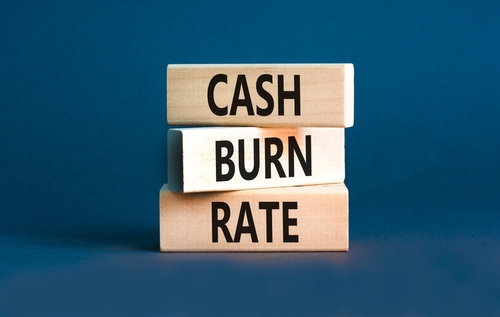 When it comes to any business, but especially for a start-up, it’s essential to determine how long a company can survive before it must declare bankruptcy and/or close its doors. The biggest metric, especially for a start-up, is to determine how much money a company has to keep its lights on.
When it comes to any business, but especially for a start-up, it’s essential to determine how long a company can survive before it must declare bankruptcy and/or close its doors. The biggest metric, especially for a start-up, is to determine how much money a company has to keep its lights on.
The term “burn rate” is defined as how much money a company spends monthly to maintain its operations. It is essential for a company to know how long it can operate before it begins to generate income and hopefully becomes cash flow positive.
It is important to look at two differences between the two sub-meanings of this term: the first is “gross burn” and the other is “net burn.” When it comes to “gross burn,” we are talking about how much a business uses in monthly operating costs. The following formula shows a business how long they have in months to operate.
For example, if a business has $2.5 million available for overhead and it spends $200,000 in monthly overhead costs, it would last 12.5 months. Expressed as a formula:
Available financial resources ($2,500,000)/monthly overhead($200,000) = 12.5 (months)
This assumes the company makes no revenue, which will be accounted for in the next example. However, this is where “net burn” comes into consideration. Net burn looks at how much money a business loses every month, but the difference with this calculation is that it looks at if it can be lowered by any incoming revenue.
If a company spends $10,000 on rent/office space, $20,000 on IT expenses, and $25,000 on employee wages, the gross burn rate would be: $55,000. However, if the company is generating sales at $17,500 per month, for example, and the cost of goods sold (COGS) is $5,000, the following calculation would determine its “net burn rate:”
Net Burn Rate = [Monthly Revenue – Cost of Goods Sold (COGS)] – Gross Burn Rate
Net Burn Rate = ($17,500 – $5,000) – $55,000
Net Burn Rate = (12,500) – 55,000 = -$42,500 Gross Burn Rate
The difference between the net burn rate and the gross burn rate may seem obvious or intuitive, but depending on how much money the start-up has available, and factoring in how much the revenue brings in and offsets the COGS, it can make a stark difference for the business’ prospects.
Once a business has determined what its “gross burn rate” and/or “net burn rate” is, the next step is to look at how to reduce costs and/or increase revenue to keep working toward positive cash flow.
Two considerations for the company include what the business can do and what it must do to make more revenue and increase profit margins. For example, companies could look at the cost-benefit analysis of incorporating AI to see if it would have an overall positive impact on labor costs. They also could look at how to create effective marketing campaigns that cost less (using backlinks instead of paid search engine marketing, for example).
Another consideration is that if the company has enough time and is able to re-strategize its model, this can have a material impact on the business receiving a cash injection from outside investors.
Determining these timeframes and figures are one way a company can reduce costs and/or pivot to more profitable products and/or services. These two calculations can provide avenues to re-invigorate a business in hopes of providing a path to profitability.
Disclaimer ![]()
![]()
